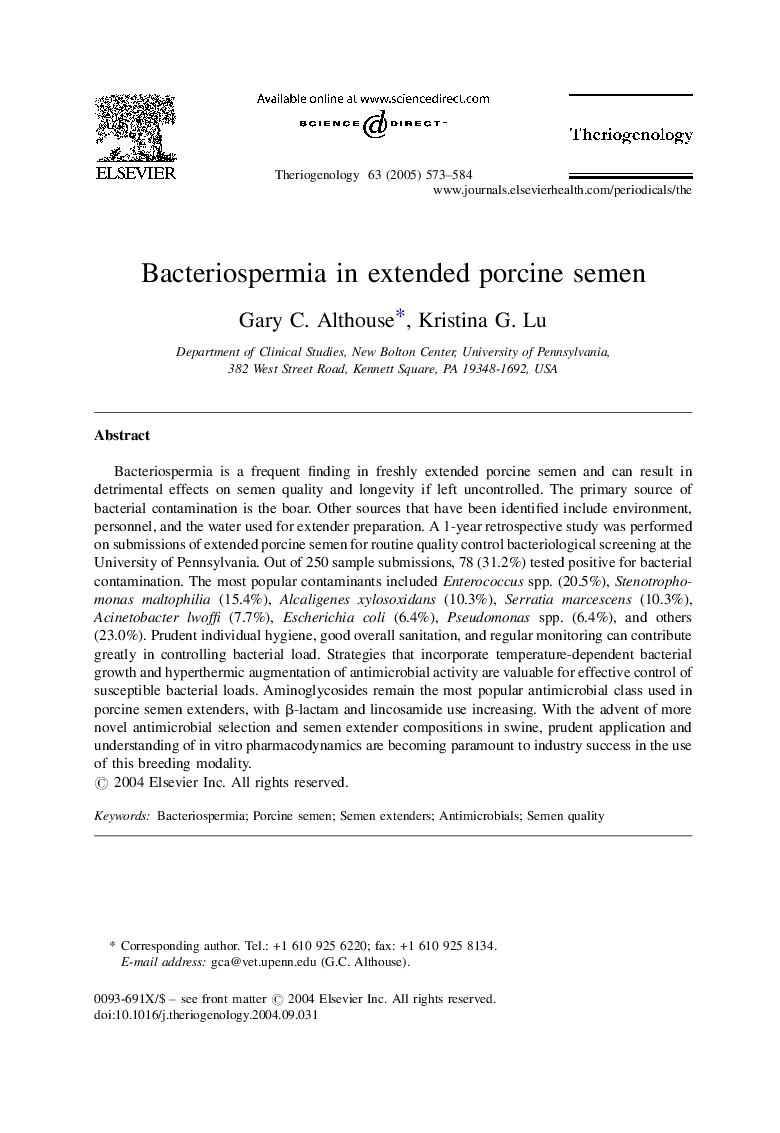| Article ID | Journal | Published Year | Pages | File Type |
|---|---|---|---|---|
| 10893356 | Theriogenology | 2005 | 12 Pages |
Abstract
Bacteriospermia is a frequent finding in freshly extended porcine semen and can result in detrimental effects on semen quality and longevity if left uncontrolled. The primary source of bacterial contamination is the boar. Other sources that have been identified include environment, personnel, and the water used for extender preparation. A 1-year retrospective study was performed on submissions of extended porcine semen for routine quality control bacteriological screening at the University of Pennsylvania. Out of 250 sample submissions, 78 (31.2%) tested positive for bacterial contamination. The most popular contaminants included Enterococcus spp. (20.5%), Stenotrophomonas maltophilia (15.4%), Alcaligenes xylosoxidans (10.3%), Serratia marcescens (10.3%), Acinetobacter lwoffi (7.7%), Escherichia coli (6.4%), Pseudomonas spp. (6.4%), and others (23.0%). Prudent individual hygiene, good overall sanitation, and regular monitoring can contribute greatly in controlling bacterial load. Strategies that incorporate temperature-dependent bacterial growth and hyperthermic augmentation of antimicrobial activity are valuable for effective control of susceptible bacterial loads. Aminoglycosides remain the most popular antimicrobial class used in porcine semen extenders, with β-lactam and lincosamide use increasing. With the advent of more novel antimicrobial selection and semen extender compositions in swine, prudent application and understanding of in vitro pharmacodynamics are becoming paramount to industry success in the use of this breeding modality.
Related Topics
Life Sciences
Agricultural and Biological Sciences
Animal Science and Zoology
Authors
Gary C. Althouse, Kristina G. Lu,
